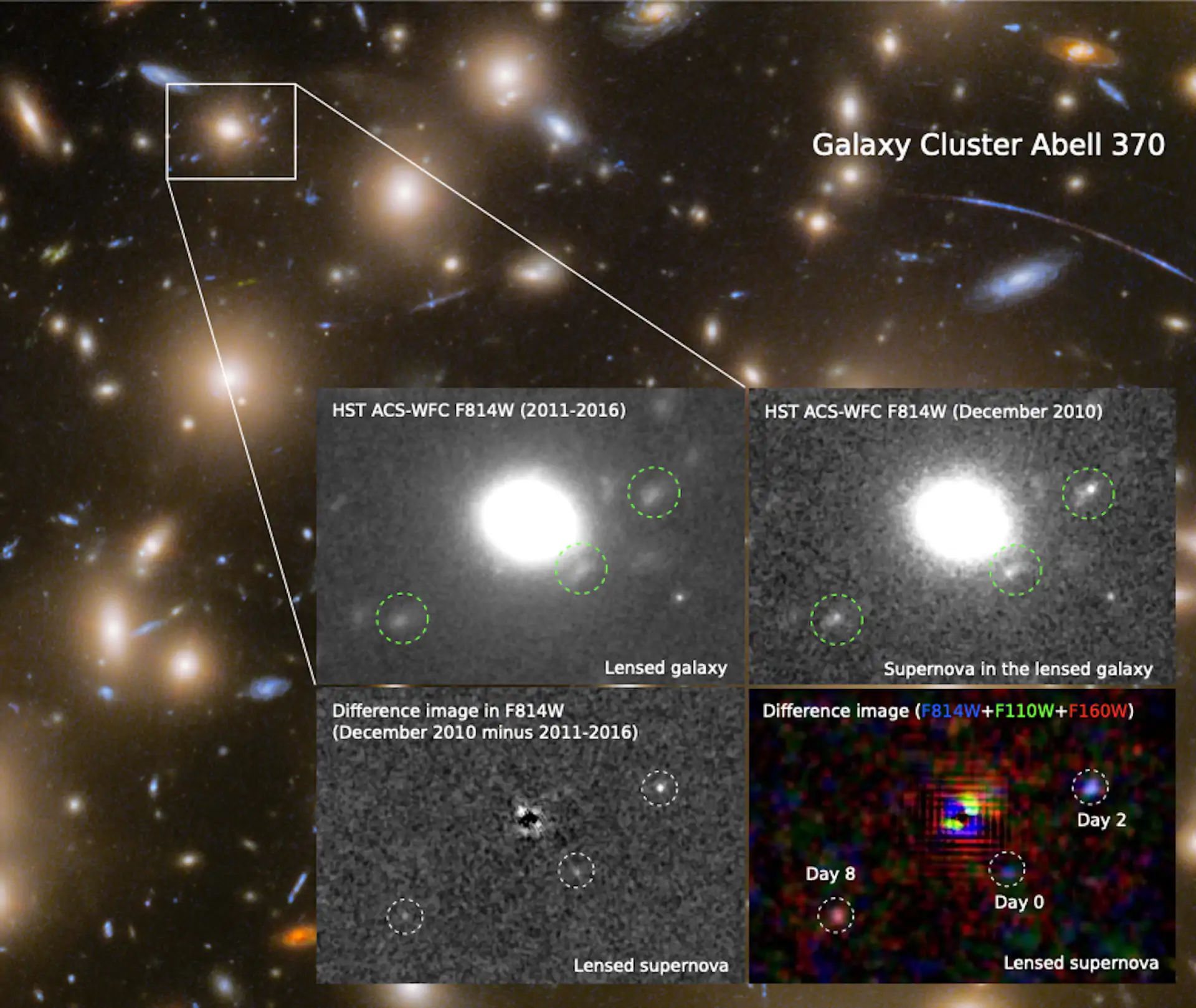When a star burns through its fuel, it collapses in on itself and explodes in a cataclysmic supernova whose light reverberates for millions of light-years throughout the cosmos.
Real-time observations of supernovae are almost unheard of. Still, a team of astronomers recently discovered images showing the very early stages of a star exploding while trawling through data collected by the Hubble Space Telescope.
The scientists found the impressive collection in archival imaging from Hubble and determined that they were captured within hours of the star's collapse. They released their findings in a paper published in the journal Nature.
"We expected to detect more transients that were missed by past searches, but we were surprised to find multiple images of a supernova," Wenlei Chen, a postdoctoral researcher at the University of Minnesota and the study lead, told IE over email. "The snapshots of the rapidly evolving supernova were entirely unexpected."
Seeing a supernova as it happened
The rapidly evolving supernova was located in the Abell 370 galaxy cluster almost 5 million light-years away, and it was detected by Hubble back in December 2010. Chen and colleagues had set out to observe faint optical transients in the archival Hubble data, but they were surprised to find something altogether more explosive.
Overall, Chen and their colleagues discovered three gravitationally lensed images of the supernova. Gravitational lensing occurs when a massive object, such as a galaxy cluster, causes spacetime to curve around it, acting like a lens for passing light. This often magnifies objects such as galaxies and stars further off in the distance. A recent example can be seen in the James Webb Space Telescope's first scientific image of SMACS 023, which includes various instances of gravitational lensing.
The three gravitationally lensed images show the supernova's early phases at different stages, with the first showing the stars only six hours after the star exploded. Based on their redshift calculations — redshift is a measure of the rate of expansion of the universe — the scientists believe the supernova is approximately 11.5 billion years old.
James Webb will unearth more supernova sightings
Chen and his colleagues' supernova observations essentially allowed them to study a star from the early universe, as they were able to analyze the characteristics of the supernova and learn a great deal about the star that produced the explosive cosmic event.
"In a high-redshift universe, stars cannot be resolved by any existing telescopes unless there is an extreme magnification from gravitational lenses," Chen told IE. "The observation of the early stages of a supernova allows us to identify its progenitor and to measure its size since the brightness and rate of cooling at the early stages of a supernova both depend on the pre-explosion size of the progenitor star. Such observations open a window for astronomers to study individual massive stars in the early universe."

NASA, ESA, STScI, Wenlei Chen (UMN), Patrick Kelly (UMN), Hubble Frontier Fields
By analyzing the brightness of the different images, the scientists discerned that the supernova rapidly cooled over roughly eight days. They calculated that the star was likely 530 times the size of the Sun, which is consistent with a red supergiant.
Chen explained to IE that "discoveries of distant core-collapse supernovae could help us learn more about star formation and galaxy evolution in the early universe." Next, he and his team have time planned to observe even more distant supernovae using NASA's James Webb, which captured a star exploding within the first month of its scientific operations. "James Webb Space Telescope will be a powerful tool to search for distant, redshifted supernovae because of its improved angular resolution and its wide wavelength coverage in the near-infrared and infrared bands," Chen explained.




